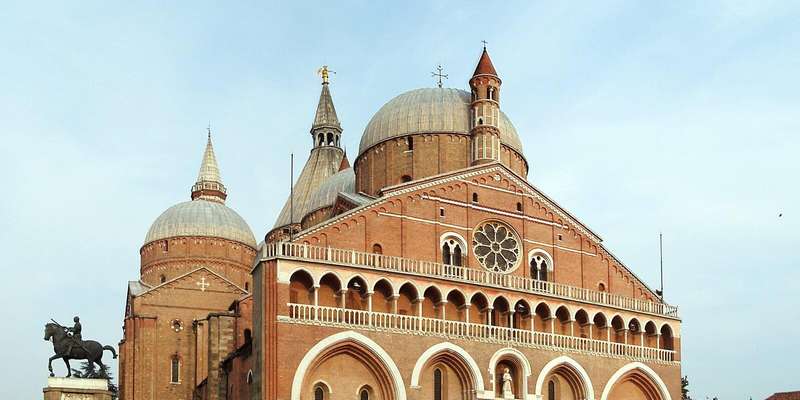- Home
- Useful Tips
- Private garden visits in...
Behind Padua's ancient walls lie some of Italy's most exquisite private gardens, yet most visitors never see them. While 78% of travelers list 'authentic local experiences' as their top priority, fewer than 15% gain access to these horticultural treasures due to confusing visitation rules and well-guarded family secrets. The frustration mounts when you realize ordinary tourist maps omit these oases, leaving you circling palazzo gates or paying premium prices for crowded public alternatives. For garden lovers, this means missing the very heart of Padua's aristocratic heritage - the geometric parterres where Galileo once strolled and the rose labyrinths that inspired Petrarch's sonnets. These aren't mere flowerbeds but living museums of Renaissance design, their access governed by unspoken local codes rather than posted schedules.


Why Padua's hidden gardens stay off tourist radars
The scarcity of information about private garden visits stems from deliberate discretion. Many belong to aristocratic families who've owned them for centuries, treating them as personal retreats rather than attractions. Unlike Florence's Boboli Gardens which were designed for public display, Padua's green spaces served as intimate extensions of residential palazzos. Some proprietors restrict access simply because narrow 16th-century pathways can't accommodate crowds - the Orto Botanico's director notes even their UNESCO-listed medicinal garden suffers damage when visitor numbers exceed 50 per hour. Other owners fear commercial exploitation; one Countess famously closed her topiary garden after spotting its geometric patterns reproduced on cheap souvenirs. This creates a paradox where the most historically significant gardens remain the hardest to find, known only through word-of-mouth networks or obscure academic papers.
Decoding access rules without local connections
Gaining entry requires understanding three unofficial systems. First, several gardens participate in the 'Giardini Segreti' consortium, opening on rotating weekdays from April to June - the trick is finding their annual schedule buried in Veneto cultural foundation websites. Second, certain residences like Palazzo Zabarella grant access if you book their often-overlooked art exhibition tickets, effectively using galleries as garden gateways. Third, Padua's university-affiliated gardens (including Europe's oldest botanical garden) offer Wednesday afternoon slots reserved months ahead, though cancellations frequently free up same-day spots if you ask custodians directly. Savvy visitors combine these approaches: arrive early at lesser-known university gardens where staff may suggest other openings, then use that knowledge to network with docents at palazzos. Always carry small change for 'donation-only' entries where formal tickets don't exist.
When to visit for maximum beauty and minimum crowds
Padua's microclimate creates two distinct garden seasons, each requiring different strategies. Spring (March-May) brings explosive wisteria blooms but also school groups - target 7:30-9AM slots when private gardens first open and photography light is ideal. Summer visits demand humidity tolerance but reward with empty pathways; focus on walled gardens like Giardino Treves whose high hedges provide shade. The real secret? Late September when persimmons ripen over geometric beds and owners personally supervise harvests - many quietly extend visiting hours during this active maintenance period. Weather also affects access; light rain often means having Medici-era stone grottoes all to yourself, while heavy showers may close fragile rose collections. Pro tip: Follow garden custodians on Instagram (look for geo-tagged posts at obscure locations) as they frequently post real-time updates on bloom cycles and unexpected openings.
Creating your own garden trail beyond the obvious sites
While Orto Botanico dominates guidebooks, five lesser-known gardens form a perfect walking circuit starting at Ponte Molino. Begin with Giardino Storico di Palazzo Cavalli's physics-inspired topiaries (open Tuesday/Thursday mornings), then cross into the Jewish Quarter for Palazzo Zuckermann's medicinal herb terrace. Time your arrival at Prato della Valle for 11AM when the gate to Villa Giusti's sunken garden gets propped open during neighborhood market days. After lunch, the alley behind Caffè Pedrocchi leads to a courtyard with unexpected citrus espaliers - ring the brass bell labeled 'Giardino' for possible entry. Conclude at Santa Sofia's cloister garden where nuns still cultivate medieval dye plants; their 3PM vespers service sometimes includes garden viewings. This route covers 1.5 leisurely miles with built-in café stops, proving Padua's garden magic exists beyond formal tours if you know where to look.



